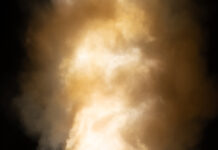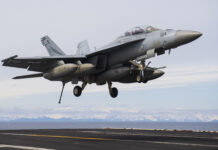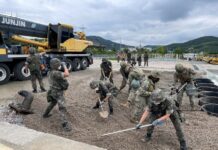Delivering a keynote address entitled ‘America’s Warfighting Navy’ at the Surface Navy Association’s National Symposium in Washington, DC, on 9 January 2024, the Chief of Naval Operations (CNO) of the US Navy (USN), Admiral Lisa Franchetti, outlined her priorities as “Warfighting, Warfighters, and the Foundation that supports them”.
Noting that the threats to the United States are “real and growing”, Adm Franchetti stated, “The strategic environment has changed; gone are the days of operating from a maritime sanctuary against competitors who cannot threaten us. The National Defense Strategy makes clear that we must defend our homeland, deter strategic attack, deter and be prepared to prevail in conflict against the People’s Republic of China, and meet the acute challenge of an aggressive Russia and other persistent threats.
“Our adversaries have designed their militaries to overcome our traditional sources of strength,” Adm Franchetti added. “We must move rapidly to stay ahead and continuously create warfighting advantages. We must think, act, and operate differently, leveraging wargaming and experimentation to integrate conventional capability with hybrid, unmanned, and disruptive technologies. Tomorrow’s battlefield will be incredibly challenging and complex. To win decisively in that environment, our Sailors must be the best warfighters in the world with the best systems, weapons, and platforms to ensure we can defeat our adversaries.”
With regard to her ‘Warfighting’ priority, Adm Franchetti noted, “We will view everything we do through a warfighting lens to ensure our Navy remains the world’s preeminent fighting force. We will prioritize the readiness and capabilities required to fight and win at sea, and the logistics and shore support required to keep our Navy fit to fight.”
The admiral added that, recognising that it does not fight alone, the USN will advance naval integration with the US Marine Corps as well as synchronise and align its warfighting efforts with the Joint Force.
In terms of prioritising ‘Warfighters’, Adm Franchetti stated, “We will use the principles of mission command to empower leaders at all levels to operate in uncertain, complex, and rapidly changing environments, ready to take initiative and bold action with confidence. We will build strong warfighting teams, recruiting and retaining talented people from across the rich fabric of America. We will provide world-class training and education to our Sailors and Civilians, honing their skills and giving them every opportunity to succeed.”
Regarding the priority of ‘Foundation’, the CNO said the USN “will work with Congress to field and maintain the world’s most powerful navy and the infrastructure that sustains it. We will team with industry and academia to solve our most pressing challenges. … We will align what we do ashore with the warfighting needs of our Fleet.”

While the USN is still regarded as the world’s strongest naval power, the People’s Liberation Army Navy (PLAN) in China became the navy with the largest fleet some years ago. The Pentagon’s annual report on China’s military capabilities noted in October 2023 that the PLAN had more than 370 ships and submarines by that point — up from the 340 ships they had in the previous year’s report – and that this number is expected to increase to 395 ships by 2025 and 435 ships by 2030. The current USN fleet, meanwhile, is around 280 vessels and is expected to reach 300 vessels in the early 2030s.
While the simple metric of counting hull numbers is not an indication of capability, the PLAN is catching up, technology-wise. Its third aircraft carrier, for example, Fujian, is currently being fitted out with systems that include an electromagnetic catapault: a technology only otherwise operational in the USN’s latest aircraft carrier: USS Gerald R Ford.













